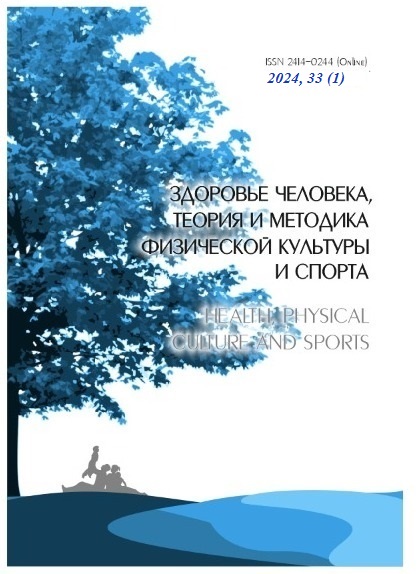EPIDEMIOLOGICAL CHRACTERISTICS OF CEREBRAL PALSY IN CHILDREN AND NEW CHANGES IN CHINESE REHABILITATION GUIDELINES FOR CEREBRAL PALSY
Abstract
To compare the distribution and incidence characteristics of children with cerebral palsy in southern and northern Xinjiang, China, and to understand the epidemiological characteristics of children with cerebral palsy in 12 provinces and cities in China, including the incidence rate, prevalence rate and the way of receiving rehabilitation treatment. To provide a large amount of data support for the establishment of a sound network referral service in China, as well as to provide diagnosis and treatment services for children with cerebral palsy, and to provide objective data for the formulation of cerebral palsy policies. The new changes in the rehabilitation guidelines for cerebral palsy in China have met people ‘s increasing requirements for evidence-based practice of cerebral palsy rehabilitation. Under the framework of ICF-CY, the evidence-based practice guidelines are revised and improved to help children ‘s rehabilitation workers better guide clinical rehabilitation practice. The rapid development of guided education in China has helped patients with cerebral palsy to obtain better functions and better integrate into society.
Downloads
References
Donald KA,Samia P,Kakooza-Mwesige A ,et al.pediatric cerebral palsy in Africa:a systematic review[J].Semin Pediatr Neurol,2014,21(1):30-35. DOI:10.1016/j.spen.2014.01.001.
Li XJ. Practical rehabilitationg therapy for cerebral palsy in children[M] .2nd ed. Beijing: People’s Medical Publishing House 2016: 3.
Qi MM, Lai XH, Li ZK, et al. Current prevalence of cerebral palsy among Chinese children:a Mata-analysis[J].Chin Evidence-based Nurs, 2015,1(2):63-67.
DOI:10.3969/j.issn.2095-8668.2015.02.003.
Li Xiaojie, Qiu Hongbin, Jiang Zhimei, et al. Epidemiological characteristics of cerebral palsy in children in 12 provinces of China [ J ]. Chinese Journal of Practical Pediatrics.2018 33 5 378-383
World Health Organization. International statistical classification of diseases and related health problems (ICD) [EB/OL].[2022-05-05].
https://www.who.int/classifications/classification-of-diseases
Kakooza-Mwesige A,Andrews C,Peterson S,et al. Prevalence of cerebral palsy in Uganda:a population-based study [J]. Lancet Glob Health,2017,5(12):e1275-e1282. DOI:10.1016/S2214-109X(17)30374-1.
Novak I, Morgan C, Adde L,et al. Early,accurate diagnosis and early in-tervention in cerebral palsy:advances in diagnosis and treatment[J]. JAMA Pediatr,2017,171(9):897-907. DOI:10.1001/jamapediatrics.2017.1689.
Chinese Association of Rehabilitation Medicine Pediatric Rehabilitation Committee , Chinese Association of Rehabilitation of Disabled Persons Rehabilitation Committee for Cerebral Palsy , Chinese Medical Doctor Association Pediatric Rehabilitation Committee , et al . Chinese rehabili - tation guidelines for cerebral palsy (2022) part 3: evaluation of children with cerebral palsy under ICF - CY framework [ J ]. Chin J Appl Clin Pediatr ,2022,37(15):1121-1141. D01:10.3760/ema. j .cnl01070-20220621-00746.
Li Xiaojie, Pang Wei, Sun Qifeng, et al. Chinese Rehabilitation Guidelines for Cerebral Palsy ( 2015 ) : Part 6 [ J ]. Chinese Journal of Rehabilitation Medicine.2015 30 12:1322-1330.
Li Xiaojie, Pang Wei, Sun Qifeng, et al. Chinese Rehabilitation Guidelines for Cerebral Palsy ( 2015 ) : Part 7 [ J ]. Chinese Journal of Rehabilitation Medicine.2016 31 1 :118-128.
Mai Jianning, Tang Liang, Tang Jiulai. Chinese Rehabilitation Guidelines for Cerebral Palsy ( 2015 ) : Part 8 [ J ]. Chinese Journal of Rehabilitation Medicine.2016 31 2:248-256.
Li Xiaojie, Pang Wei, et al. Chinese Rehabilitation Guideline for Cerebral Palsy ( 2022 ) Chapter 4 : Rehabilitation Treatment ( I ) [ J ].Chinese Journal of Practical Pediatrics. 2022,37(16) : 1201-1229. DOI: 10.3760/cma.j.cn101070-20220711-00850
Li Xiaojie, Pang Wei, et al. Chinese Rehabilitation Guidelines for Cerebral Palsy ( 2022 ) Chapter 4 : Rehabilitation Therapy ( Part 2 ) [ J ]. Chinese Journal of Practical Pediatrics. 2022,37(17) : 1281-1309. DOI: 10.3760/cma.j.cn101070-20220718-00875
Wang Xuefeng, Ma Bingxiang. Chinese Rehabilitation Guideline for Cerebral Palsy ( 2022 ) Chapter 5 : Rehabilitation Treatment of Traditional Chinese Medicine [ J ].Chinese Journal of Practical Pediatrics. 2022,37(18) : 1365-1376. DOI:10.3760/cma.j.cn101070-20220815-00972
Ma Bingxiang. Chinese Rehabilitation Guideline for Cerebral Palsy ( 2022 ) Chapter 6 : Rehabilitation Nursing [ J ].Chinese Journal of Practical Pediatrics.2022,37(19) : 1441-1451. DOI: 10.3760/cma. j.cn101070-20220905-01045
Shawnon. Chinese Rehabilitation Guidelines for Cerebral Palsy ( 2022 ), Chapter 7 : Rehabilitation Approaches and Management [ J ]. Chinese Journal of Practical Pediatrics. 2022,37(20) : 1521-1526. DOI: 10.3760/cma.j.cn101070-20220919-01094
Copyright (c) 2024 Health, physical culture and sports

This work is licensed under a Creative Commons Attribution-NonCommercial 4.0 International License.
An author should not normally publish manuscripts describing essentially the same research in multiple journals or publication venues. Such redundant publication is generally considered to constitute unethical publishing behavior, and if discovered may result in a manuscript under consideration being rejected, or a published article being retracted.
Authors of manuscripts reporting on original research should present an accurate account of the work performed, accompanied by an objective discussion of its significance. Underlying data should be represented accurately in the manuscript. The manuscript should contain sufficient detail and references to permit others to replicate the work. The fabrication of results and the making of fraudulent or knowingly inaccurate statements constitute unethical behavior and may be cause for rejection or retraction of a manuscript or published article.





